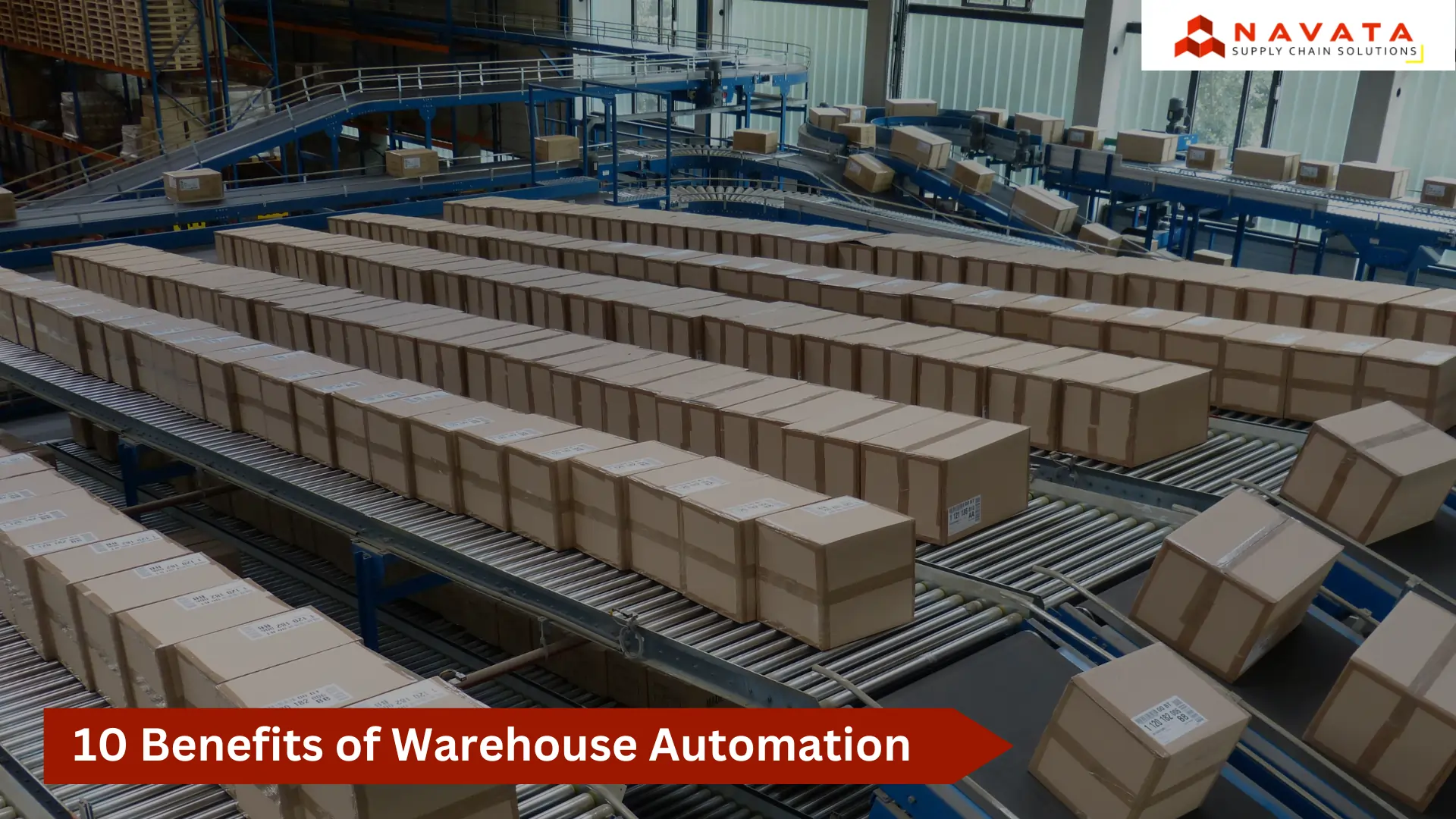10 Benefits of Warehouse Automation
The fast-moving supply chain industry now depends on warehouse automation to help businesses develop competitive agility. The combination of improved consumer demands and growing order numbers and instant accuracy requirements makes manual warehouse operations inadequate. The adoption of automation technology connects technology systems directly into basic warehouse procedures which leads to efficient operations and decreases errors while improving total output.
The warehouse operations experience radical transformations due to automated solutions which encompass barcode scanning across advanced robotics systems featuring AI-led technologies. These advanced technologies deliver better productivity levels through increased safety features and decreased expenses and enable companies to easily expand their business operations. This blog investigates the ten main advantages of warehouse automation which enable contemporary supply chains to achieve rapid and intelligent delivery with exceptional reliability.

You May Also Like to Read: Role of Artificial Intelligence and Machine Learning in Supply Chain
1. Increased Efficiency
Warehouse automation uses technologies to enhance operational efficiency through the rapid execution of activities such as product selection alongside packaging functions, sorting processes, and order delivery stages. Systems that operate automatically produce faster flow processes, which help businesses achieve their tight deadline requirements and manage heavy order volumes. Business operations become both flexible to market changes and operational costs reduce when manual steps from business processes are eliminated thus department productivity increases while speed of execution improves.
2. Reduced Human Error
The human-driven process creates widespread errors when employees conduct data entry work and perform picking functions and conduct inventory counts. Automation reduces these risks through precise technology which includes barcode scanners as well as RFID and software-driven systems that operate according to established rules. The accuracy of orders and inventory management combined with shipment details becomes significantly higher, which leads to reduced costly returns and enhanced operational reliability.
3. Lower Labor Costs
Businesses achieve workforce optimization through automation of repetitive work along with minimising their need for manual labour. A well-managed system maintains peak productivity as it decreases labour expenses and reduces costs associated with staffing and training new employees. The reallocation of personnel to different valuable tasks leads to better operational efficiency while decreasing expenses over multiple time periods.
4. Improved Inventory Accuracy
Real-time inventory visibility becomes possible through warehouse management system (WMS) integration of automation tools which include RFID and barcode scanners. The system creates accurate inventory records while avoiding stock discrepancies and both prevents excessive stock levels and stock depletion. A system of automated tracking records every item precisely, which improves the quality of both purchasing data and stock control decisions.
5. Faster Order Fulfillment
Through automated picking systems combined with robotic conveyors along with optimized workflows, businesses can now process orders at much faster rates. The combined operation of order selection and packaging and shipment functions allows for swift processing with diminished delay times, which results in accelerated delivery periods. This feature represents an essential capability since speed functions as a key advantage in current e-commerce logistics.
6. Better Space Utilization
Warehouse capacity reaches maximum potential through the automated storage technology AS/RS, which enables vertical storage and compacts inventory layout. The need for warehouse expansion no longer exists because this technology helps reduce real estate costs. Better space organisation through storage management produces more efficient movement systems and speeds up access to high-density stored inventory.
7. Enhanced Workplace Safety
The implementation of automated systems executes dangerous manual work such as heavy lifting activities together with repetitive tasks and forklift operations. Workplace safety improves when automation reduces employee risks and guarantees that all safety requirements are met. Workplace environments that present fewer risks lead businesses to experience reduced incidents, coupled with diminished insurance expenses and favorable working conditions for both workers and office staff.
8. Scalability
Businesses can expand their operations through flexible automated systems that require no direct relationship between growth and labour or infrastructure development. Companies can achieve fast and efficient growth by adding new modules or robots that correspond to rising order volumes. Future operations remain protected through this approach, which enables better market response capabilities.
9. Data-Driven Decisions
Operational data that automation systems record in real time allows developers to produce performance analytics for decision-making. Managers acquire better knowledge to make decisions, locate operational constraints, and allocate their resources effectively. Supply chain operations at an advanced level achieve better results through data analysis, which supports forecasting while tracking KPIs and continuous improvement efforts.
10. Higher Customer Satisfaction
Order processing activities that combine reliability with speed and error elimination result in prompt delivery of correct shipments. Customer trust grows together with loyalty and satisfaction when reliable order processing is achieved. Consistent achievement of superior customer expectations results in stronger brand reputation and positioning businesses to outcompete other supply chain operators in the market.
Thanks For Reading: 10 Benefits of Warehouse Automation for Modern Supply Chains
Powered By 360Presence

